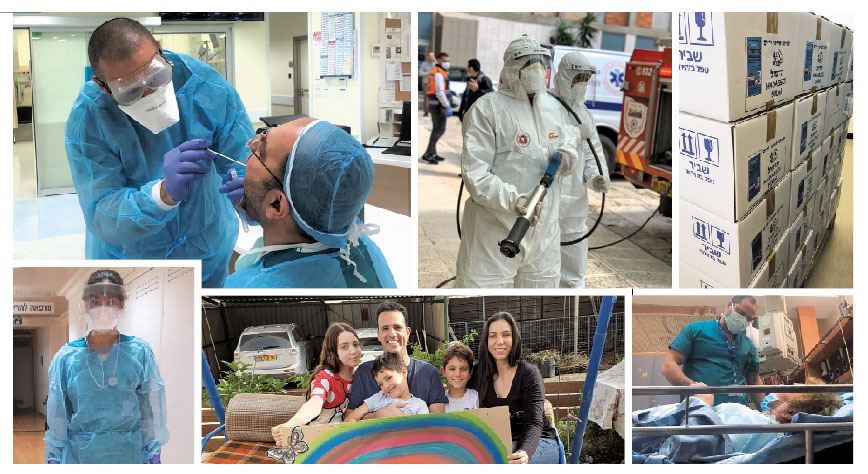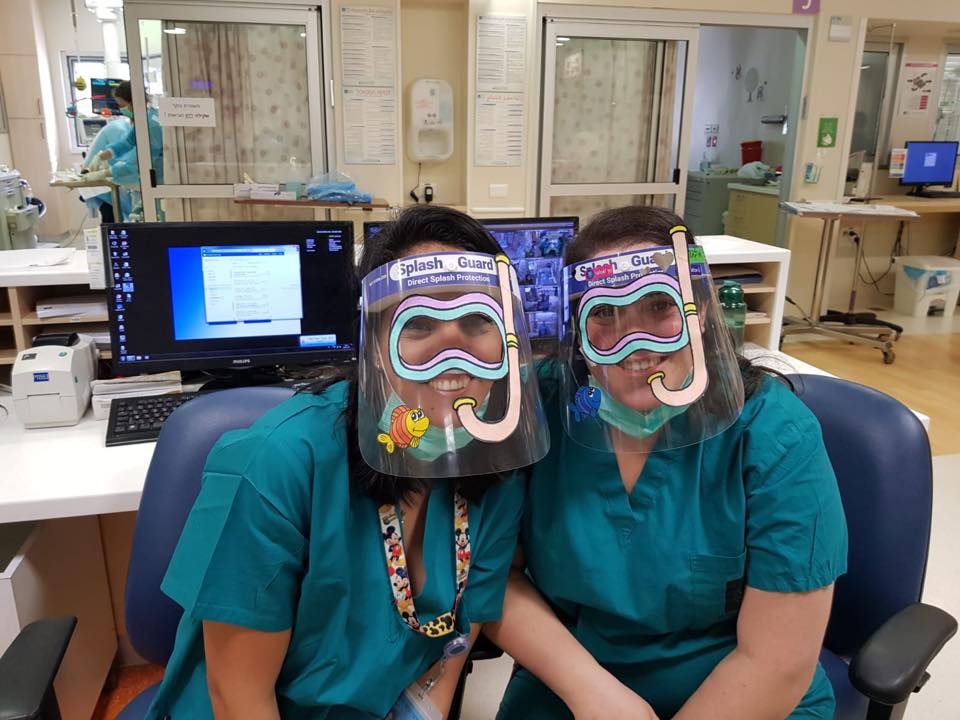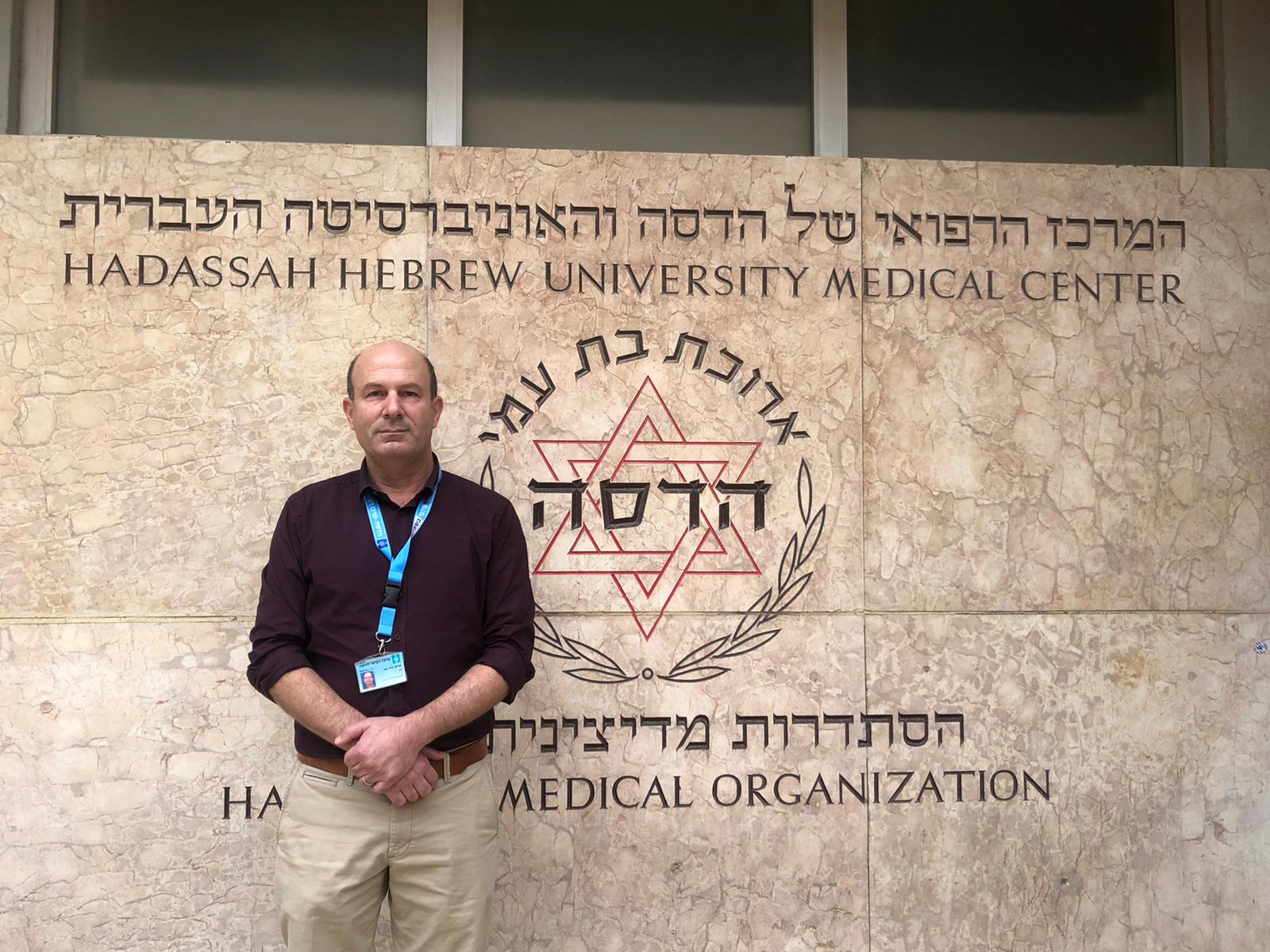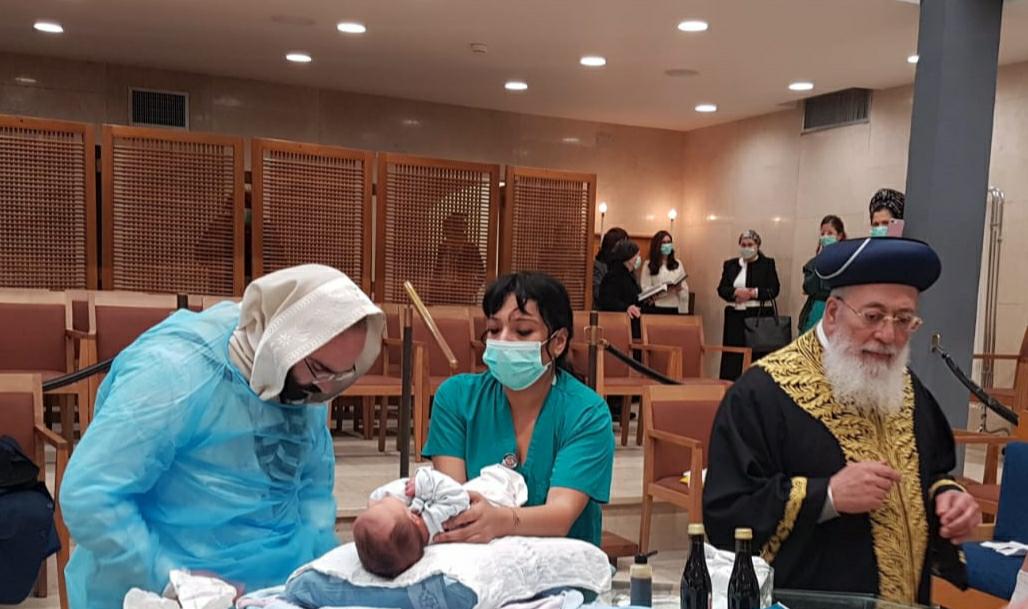Health + Medicine
Feature
On the Front Lines of Battling Covid-19
Midwife Noa Ben Yair was prepping a patient for a cesarean section when the call came to the maternity ward. The Magen David Adom paramedic said his ambulance was already driving over the curving hillside toward Hadassah Hospital in Ein Kerem. Inside was a woman in labor. The ambulance had picked her up at her home in a Jerusalem neighborhood already marked as a hot spot of the coronavirus. And yes, the paramedic said, she had been exposed. No, she hadn’t yet been tested.
It was not Ben Yair’s turn to treat the next laboring mother, but the 43-year-old volunteered to switch with the midwife on duty, some 20 years her senior and more at risk from complications if she were to contract Covid-19. Midwife Gila Zarbiv, 35, who is also an infectious disease nurse, suited up, too, both women covering themselves from head to toe in protective gear.
Consulting with the head nurse for labor and delivery, Nava Braverman, they followed the strictest protocol: The paramedics would bring the pregnant woman directly to Room No. 9, one of the old operating rooms of the Round Building. The building was already prepared for just such a situation.

“I wasn’t scared,” said Ben Yair, a graduate of the Henrietta Szold Hadassah-Hebrew University School of Nursing. “I felt I was exactly where I needed to be, fulfilling my mission as a midwife. We’re experienced at Hadassah Hospital, and I’ve delivered babies under special circumstances, like women who are HIV positive or have hepatitis.”
An adorable baby boy, his parents’ fourth child, came into the world in Room No. 9 on March 16. The mom’s test came back positive for Covid-19. Thankfully, neither the baby nor the midwives were infected.
The strategy for the safe delivery of the first baby in Israel born to a woman with the coronavirus and for the well-being of the staff was in place long before the laboring mother arrived at the hospital. It had been implemented a month before the hospital even received its first infected patient on March 9, explained Dr. Yoram Weiss, director of the Ein Kerem facility.
China announced its earliest cases of Covid-19 at the end of December 2019. The first Israelis exposed were 14 passengers among the 3,711 passengers and crew of the Diamond Princess cruise ship quarantined off the cost of Japan in February. On February 16, the Israeli Ministry of Health dispatched Hadassah infectious disease specialist Dr. Ran Nir-Paz to check on the Israelis who tested positive in a field hospital in Japan.
By then, Dr. Zeev Rotstein, Hadassah Medical Organization’s director-general, and Dr. Weiss were meeting with key hospital players and actively making plans for the probable pandemic.
“The process began with enlisting administration and division leaders to prepare the rest of the staff,” said Dr. Weiss. “It was clear that internal medicine would play the main role. We have staff members who are internationally respected experts in infectious diseases who could guide the way.”
Step one was designating a secluded space for the coronavirus patients. “Fortunately, we have the Round Building, which has largely been emptied and is part of a renovation fundraising campaign,” Dr. Weiss said. “Once again, we are thankful to our donors who helped us build the modern Sarah Wetsman Davidson Hospital Tower, which is totally separate from the Round Building. Having an empty building has given us the safe space to treat coronavirus patients.”
Cardiology was the last department to move into the Tower, and its old headquarters on the fifth floor of the Round Building was the first to be converted into a treatment center for the coronavirus. Likewise, the former cardiology intensive care unit was quickly renovated to handle the new situation. This gave the hospital time to repurpose other space in the Round Building and create more intensive care units as more patients would arrive who needed respirators.

“These preparations didn’t happen in a vacuum,” Dr. Weiss explained, noting that even as Covid-19 patients came in, the medical center continued caring for all its patients, whether they needed treatment for heart attacks, cancer or a broken limb. “Because we’re dealing with a virus that isn’t just airborne—it remains on surfaces—cleansing is a major challenge,” he said. “The regular hospital cleanliness protocols wouldn’t be enough for this very contagious virus. The fire department came to the hospital to spray the outdoor causeway where the ambulances arrive.”
Rely Alon, deputy director for Nursing and Health Professions, has been playing a key role in setting up the Round Building wards and organizing hospital staff throughout the crisis.
“A first challenge was to put in communications equipment,” she said. “We’re used to hands-on human contact. We nurses could no longer walk in and check on patients. We installed closed-circuit televisions in order to speak by intercoms. Whenever doctors and nurses make morning and evening rounds, patients are told to put on their protective masks, and the staff their protective suits. Equipment remains in closed bags until it’s needed.”
Constant emphasis is placed on training medical staff to remain alert about protecting themselves. “What’s most important is having someone watch you taking off your protective gear,” said Dr. Weiss. “That’s when most contamination takes place.”
At a special staff briefing on March 9, lessons gleaned from medical professionals in China and South Korea were reviewed. Among the small but important lessons was that staff in those countries had not been careful enough in covering their shoes.
“Remember shoe covers,” Pnina Sharon, an emergency room nurse, emphasized at the briefing. She oversees the intake of patients suspected of having Covid-19 and had already set up a dedicated coronavirus triage area away from the emergency patients.
At the same meeting, a radiologist showed sobering CT scans of the decimated lungs from a coronavirus victim. The room fell silent.
Within a few hours, Hadassah’s first coronavirus patient arrived.
Matan Alon, 41, from Moshav Tomer in the Jordan Valley, had returned from a skiing trip in Austria. Married and a father of three, he followed governmental mandates for Israelis coming back from abroad and went into quarantine. But he soon fell sick and was tested at the moshav for the virus.
“I was the first patient at Hadassah,” said Alon (no relation to Rely Alon), who has recovered and is now at home. “I was alone, but not for long.”
Patients began filling the fifth-floor ward. Most of the early patients showed light symptoms—coughs, mild fever and fatigue. Moderate and more serious patients followed, necessitating the opening of additional wards. The Outbreak ICU, under the direction of Dr. Sigal Sviri, head of Hadassah’s Medical Intensive Care department, began to receive moderate and seriously ill patients. Soon it was full.

At least six of Hadassah’s physician-researchers turned their research efforts into treating coronavirus patients, constantly consulting with colleagues abroad.
Hadassah began clinical trials on two medications from Japan for those in the early stages of the disease as well as on a new low-cost respirator developed by a team of volunteer civilian and military engineers and doctors, including Hadassah robotics expert and surgeon Dr. Yoav Mintz.
Infectious disease specialist Dr. Dana Wolf also premiered a system to test plasma from recovered coronavirus patients for antibodies in order to create a serum to help those who are seriously ill.
Early in the crisis, Director-General Dr. Rotstein lobbied the government, which initially had envisioned a single government-run testing lab for the virus, for broad testing and expanded laboratory facilities dedicated to processing tests. Hadassah became the first nongovernmental facility to test for the virus. Under the supervision of Dr. Wolf, head of Hadassah’s Clinical Virology Unit, vastly expanded laboratories were opened with the capacity of processing more than 2,500 tests a day, transforming Israel’s ability to quickly diagnose the virus. “Suddenly we became a totally independent facility,” said Dr. Weiss. “We could test patients, get the results and begin treating patients.”
The increased testing capacity also allowed Dr. Rotstein to make another radical decision: He made testing for the virus every five days compulsory for all HMO staff—the first Israeli hospital to require this.
Rely Alon, the nursing deputy director, sees the universal testing as a breakthrough. “We had hundreds of doctors and nurses in quarantine some days,” she explained, “and we had to switch around staff to cover all the shifts. Most of those in quarantine for 14 days didn’t develop the virus. Once tested negative, they didn’t have to wait in quarantine and could return to their vital work.”
“One of our daily challenges remains switching around staff so we’re covered in all the different departments,” said Alon. “This requires a great deal of dedication on the part of our medical staff, who are also mostly parents with children off from school and grandparents unable to help because older people are the most vulnerable. The staff is also training to deal with the psychological needs of patients who can no longer have family and friends visit them in the hospital. Many are offering their own cell phone numbers to keep in touch with their patients’ families.”

Eight days after the birth of the first Israeli baby to a mother stricken with the coronavirus, it was time for him to enter the covenant of Abraham with a brit milah.
“The first mohel who was suggested was interviewed by Dr. Ran Nir-Paz, back from Japan,” said Hadassah Hospital Rabbi Moshe Klein, who was at home in quarantine. “He was asked not to come to the hospital after Dr. Nir-Paz learned that the mohel’s grandchildren had visited him on Shabbat—putting him at risk for the virus. A second mohel was questioned and O.K.’d by Dr. Nir-Paz.”
The brit took place in the Fannie and Maxwell Abbell Synagogue, sunlight filtering through Marc Chagall’s glorious stained-glass windows. Only 10 people were present, following the rules in Israel at the beginning of the crisis, including the mohel and the sandak, Sephardic Chief Rabbi of Jerusalem Shlomo Amar. They were all standing or sitting at a distance from each other. The baby’s mother, who was recovering in the Outbreak Ward and asked not to be identified, couldn’t attend. Neither could the father, who was in isolation at home with the couple’s other three children. They watched online. But midwives Noa Ben Yair and Gila Zarbiv were there, bittersweet tears staining their cheeks.
The baby’s name? Raphael Baruch, named for the healing angel Raphael and the Hebrew word for blessing.
Barbara Sofer is a veteran journalist and author as well as Israel director of public relations for Hadassah. She lives in Jerusalem.








 Facebook
Facebook Instagram
Instagram Twitter
Twitter
Leave a Reply